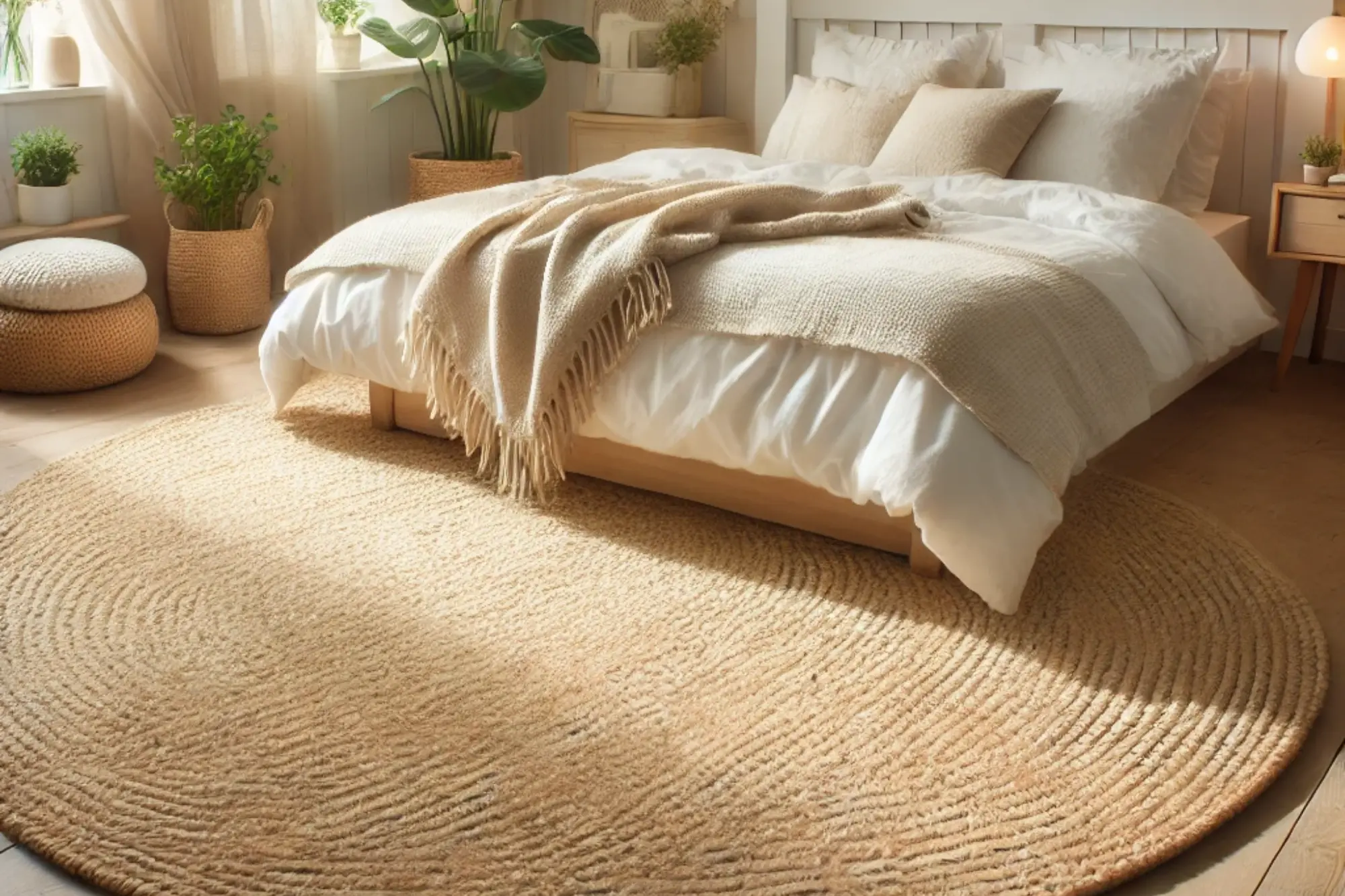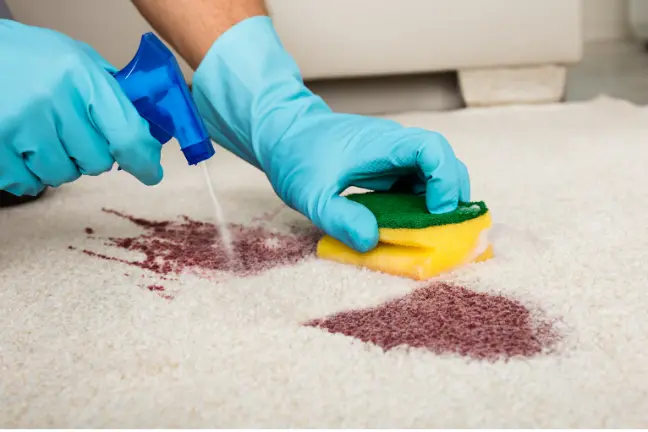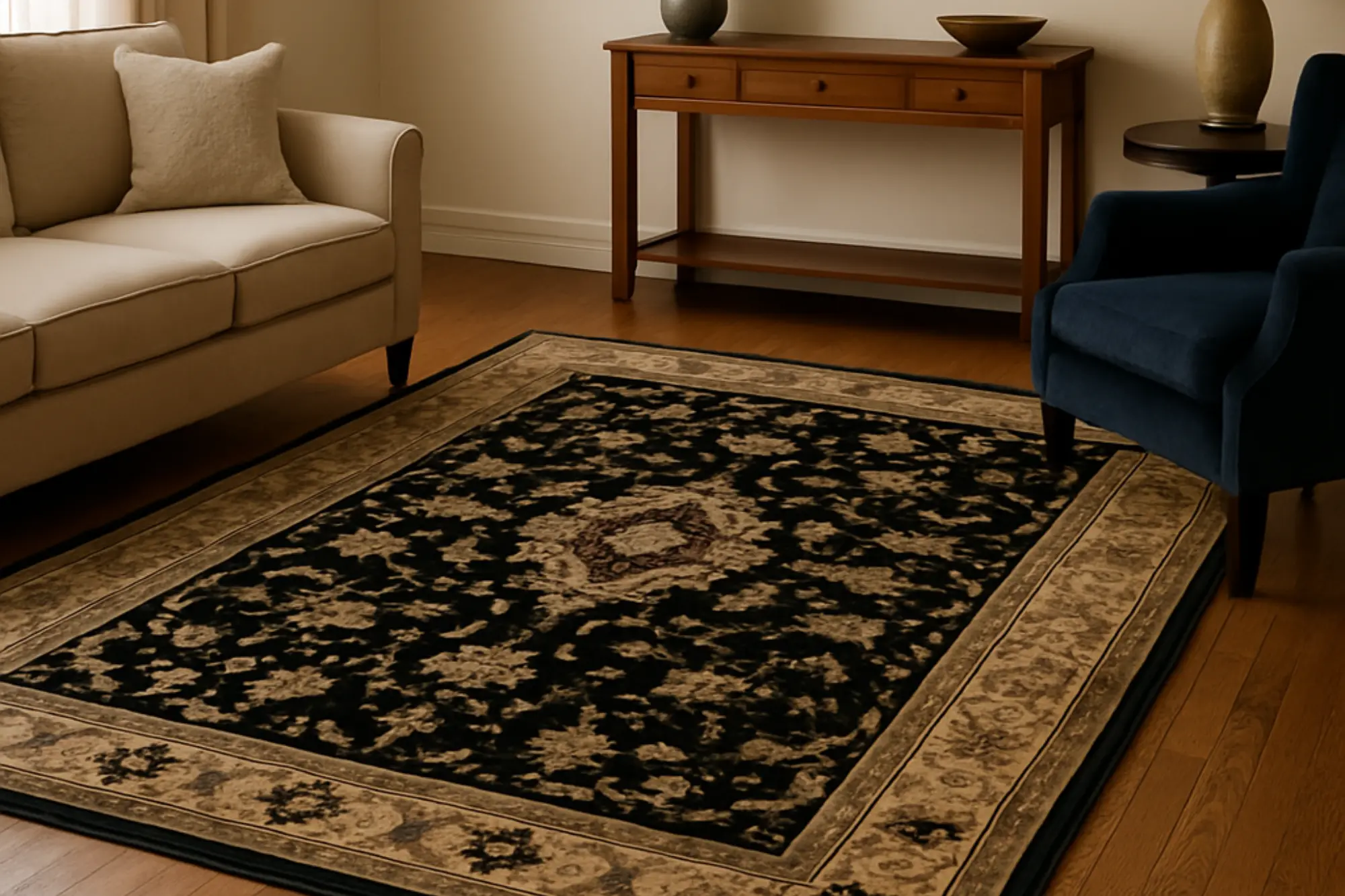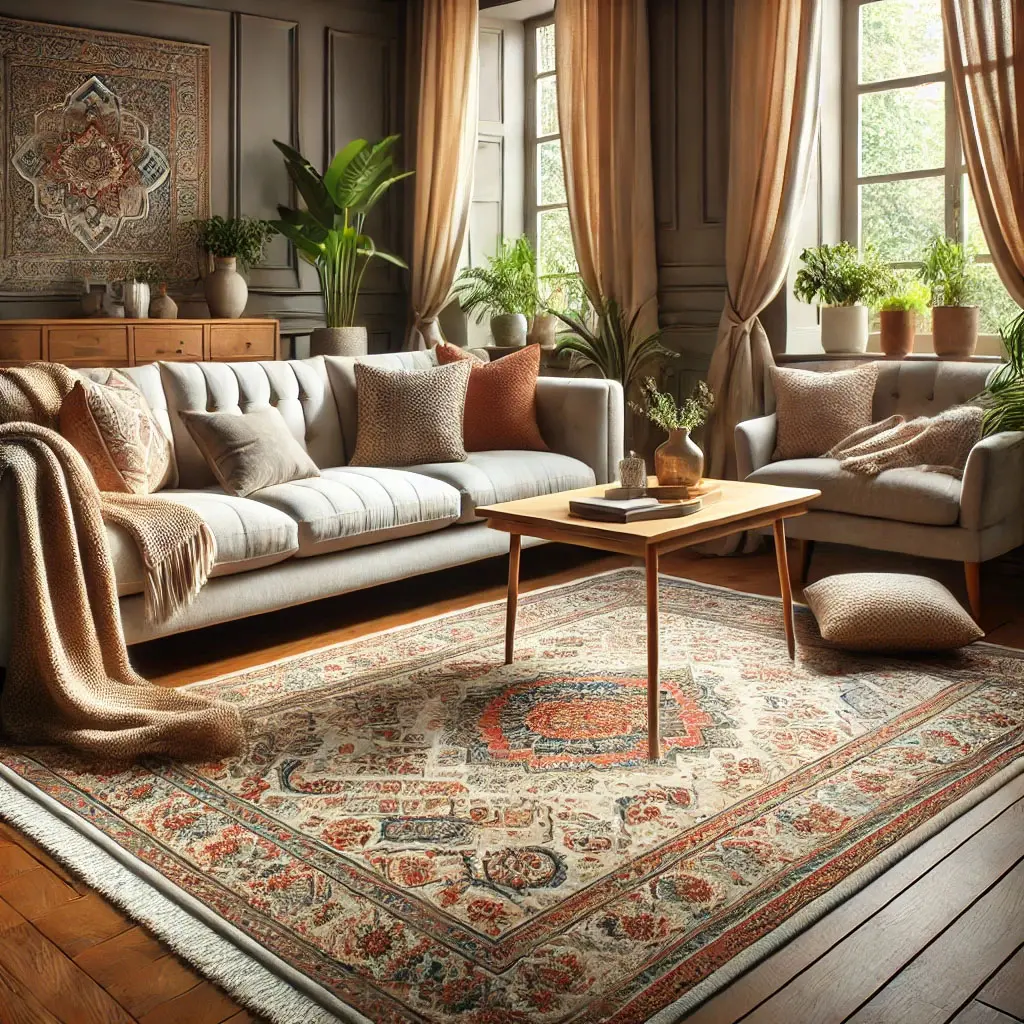Fibers Unraveled: The Ultimate Rug Material Showdown
When it comes to choosing the perfect rug for your home, the material is a crucial factor that can make a world of difference in the overall quality, aesthetics, and functionality of your chosen textile. With a vast array of natural and synthetic fibers on the market, it can be challenging to navigate the diverse landscape of rug materials. Each material offers unique benefits and drawbacks, so understanding the properties of various fibers is key to finding a rug that not only elevates your interior design but also meets your specific needs and preferences.
In this blog, we'll dive into the world of rug materials, exploring their characteristics and qualities, and how they can impact the look and feel of your living spaces. Join us as we unravel the mysteries of fibers, guiding you through the ultimate rug material showdown.
Natural Fiber Wonders: Exploring the Best of Nature's Offerings
Natural fibers have long been a staple in rug-making, offering a range of unique characteristics that make them a popular choice for various spaces within the home. Let's take a closer look at some of the most common natural fibers and how they can contribute to the overall beauty and functionality of your living spaces.
Wool: Wool is an enduring favorite when it comes to rug materials, thanks to its durability, softness, and natural resistance to stains and moisture. A wool living room rug , for example, can provide a cozy and inviting atmosphere while standing up to heavy foot traffic.
Silk: Known for its luxurious sheen and incredible softness, silk adds an elegant touch to any space. While silk rugs are stunning, they can be delicate and may require extra care. A silk entryway rug or dining room rug may not be the best choice for high-traffic areas but could be perfect as a statement piece in a bedroom or living room.
Cotton: Cotton rugs offer a casual and affordable option that's easy to clean and maintain. They're versatile and can work well in various spaces like kitchens, bathrooms, and entryways. However, cotton rugs may be less durable than wool or silk counterparts.
Jute: Jute is a natural, eco-friendly fiber that adds a touch of rustic charm to any space. It's coarse texture and earthy tones make it an excellent choice for an outdoor rug , foyer rug , or even a kitchen rug . However, jute rugs can be prone to staining and may not be suitable for damp or humid environments like a bathroom.
Each natural fiber brings its own set of benefits and potential drawbacks, so it's essential to consider the specific needs of the space where you plan to place your rug. By understanding the unique qualities of these fibers, you can make an informed decision and select a rug that perfectly complements your home's aesthetic and functionality.

Synthetic Fibers: A Closer Look at Man-Made Alternatives
While natural fibers have long held a prestigious position in the world of rugs, synthetic fibers have made their presence felt as well. However, it's crucial to understand the properties, advantages, and potential drawbacks of these man-made materials before choosing a rug for your home. Let's dive into the world of synthetic rug materials and see how they compare to their natural counterparts.
Nylon: Nylon is a durable and resilient synthetic fiber often used in the production of low-cost rugs. It can resist wear and tear, making it suitable for high-traffic areas. However, nylon rugs can lack the warmth, comfort, and authenticity of natural fiber rugs, such as wool or silk.
Polyester: Polyester rugs can be soft and stain-resistant, but they may not hold up as well to heavy foot traffic or provide the same level of comfort as natural fiber rugs. Additionally, they can be prone to crushing and matting, which can make them look worn out more quickly.
Polypropylene: Polypropylene, also known as olefin, is a popular synthetic rug material due to its affordability and resistance to moisture, stains, and fading. However, it lacks the luxurious feel of natural fibers and can appear less sophisticated. Furthermore, polypropylene rugs can be prone to pilling and shedding, diminishing their overall appearance over time.
Viscose: Often used as a more affordable alternative to silk, viscose rugs can provide an attractive sheen and soft texture. However, they are not as durable as natural silk rugs and can be challenging to clean, as they may easily become damaged by water or excessive moisture.
While synthetic fibers may offer some advantages, such as affordability and stain resistance, they often fall short in terms of quality, comfort, and aesthetic appeal when compared to natural fibers. For those who value authenticity, craftsmanship, and long-lasting beauty, investing in a natural fiber rug is a wise decision. Remember that your home deserves the best, and nothing can quite compare to the unique charm and elegance of a high-quality natural fiber rug.
Durability and Maintenance: A Battle of Fibers
When selecting the perfect rug for your home, considering durability and maintenance requirements is essential. Different rug materials vary in their ability to withstand wear and tear, as well as their cleaning needs. Let's compare the durability and maintenance of various rug materials to help you make an informed decision for your living space.
Wool: Wool rugs are known for their excellent durability and ability to withstand heavy foot traffic. They are naturally resistant to stains and moisture, making them a popular choice for busy households. Wool rugs can also be an ideal option for pet-friendly homes, as they are less prone to pet hair buildup and can handle occasional accidents. Regular vacuuming and professional cleaning every few years will keep your wool rug looking its best.
Silk: Silk rugs are undeniably beautiful and luxurious, but they may require more delicate care. While they are relatively durable, they are best suited for low-traffic areas or used as statement pieces. Regular vacuuming with a brushless attachment and professional cleaning, when needed, will help maintain their delicate fibers and stunning appearance.
Cotton: Cotton rugs are lightweight and easy to clean, making them a popular choice for casual spaces or as washable rugs for kitchens or bathrooms. However, they may not be as durable as wool or silk rugs, and they may show signs of wear more quickly in high-traffic areas. Cotton rugs can often be machine-washed or spot cleaned as needed.
Jute and Sisal: These natural fiber rugs are durable and eco-friendly, but they may not be as comfortable underfoot as wool or cotton rugs. Jute and sisal rugs can be ideal for high-traffic areas and can be vacuumed regularly to remove dirt and debris. However, they may not be the best choice for pet-friendly homes, as their rough texture can be difficult to clean if accidents occur.
By understanding the durability and maintenance requirements of different rug materials, you can make a more informed decision when choosing the perfect rug for your home. Whether you need a rug for a high-traffic area, a pet-friendly space, or a room that demands easy cleaning, knowing the strengths and weaknesses of each material will help you find the ideal match for your unique needs.
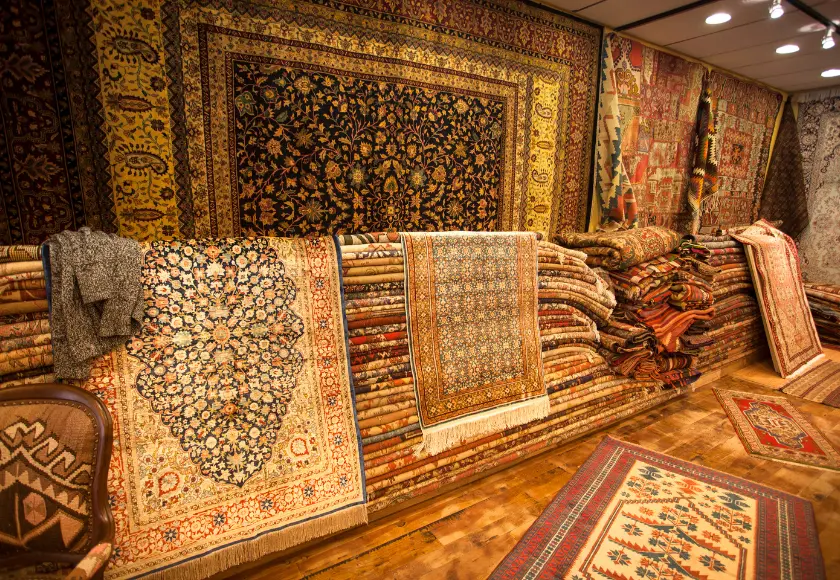
Comfort and Texture: A Journey Through Rug Materials
The choice of rug material not only influences the rug's durability and maintenance but also plays a significant role in its comfort and texture. The feel of a rug underfoot can greatly impact your overall satisfaction and the ambiance of your living space. Let's explore how different rug materials cater to various preferences and needs in terms of comfort and texture.
Wool: Wool rugs are prized for their softness and luxurious feel, making them an excellent choice for spaces where comfort is paramount, such as living rooms or bedrooms. Wool's natural resilience and density provide a plush, cushioned sensation underfoot, offering a perfect blend of comfort and durability.
Silk: Silk rugs are the epitome of opulence, with their unmatched softness and delicate texture. These rugs are often used as statement pieces or in low-traffic areas where their beauty can be appreciated without the worry of wear and tear. Their smooth, refined texture exudes a sense of elegance and sophistication.
Cotton: Cotton rugs offer a casual, comfortable feel and are typically lightweight and flat-woven. They provide a soft, yet practical, underfoot experience that works well in informal spaces such as children's rooms, kitchens, or bathrooms. Cotton's versatility and ease of care make it an attractive option for many households.
Jute and Sisal: While not as soft and plush as wool or cotton, jute and sisal rugs have their own unique appeal. Their natural, earthy texture brings a sense of warmth and organic charm to a room. These rugs are suitable for those who appreciate the rustic, raw beauty of natural fibers and don't mind a slightly firmer feel underfoot.
As you embark on your rug journey, considering the comfort and texture of various rug materials will help you find the perfect match for your home. From the luxurious softness of wool and silk to the casual comfort of cotton and the rustic charm of jute and sisal, each material offers a unique experience to cater to your personal preferences and the needs of your living space.
Environmental Impact: Weighing the Eco-Friendly Pros and Cons of Rug Materials
When it comes to choosing a rug, considering the environmental impact of various materials is a responsible and conscientious approach. As we explore the ecological footprint of different rug materials, we'll highlight the sustainability of natural fibers and the recyclability or non-biodegradable nature of synthetic options.
Natural Fibers: Natural fibers such as wool, silk, cotton, jute, and sisal are renewable resources, which means they can be replenished over time. Many of these fibers are also biodegradable, breaking down naturally and returning nutrients to the soil. Wool, for example, is an eco-friendly choice as sheep's wool regrows annually and is a sustainable, renewable resource. Similarly, jute and sisal are rapidly renewable plants, making rugs made from these fibers environmentally friendly options.
Synthetic Fibers: Synthetic rug materials such as nylon, polyester, and polypropylene are derived from petroleum, a non-renewable resource. While some synthetic fibers can be recycled, the process often requires significant energy consumption, and not all recycling facilities accept these materials. Additionally, synthetic rugs may take hundreds of years to decompose in landfills, contributing to environmental waste. Viscose, a semi-synthetic material made from cellulose, is biodegradable but can require extensive chemical processing during its production, which may have a negative impact on the environment.
Eco-Friendly Production: Another aspect to consider is the production process of the rug materials. Hand-knotted and handwoven rugs made from natural fibers often have a smaller environmental footprint compared to mass-produced, machine-made rugs. Furthermore, some rug manufacturers and artisans are committed to eco-friendly practices, such as using natural dyes or adopting sustainable production methods.
In conclusion, understanding the environmental impact of rug materials is an important factor when selecting a rug for your home. Natural fibers like wool, cotton, jute, and sisal are generally more eco-friendly and sustainable options compared to synthetic materials. As you explore the world of rugs, consider choosing a rug that not only enhances the beauty of your living space but also aligns with your commitment to preserving our planet.
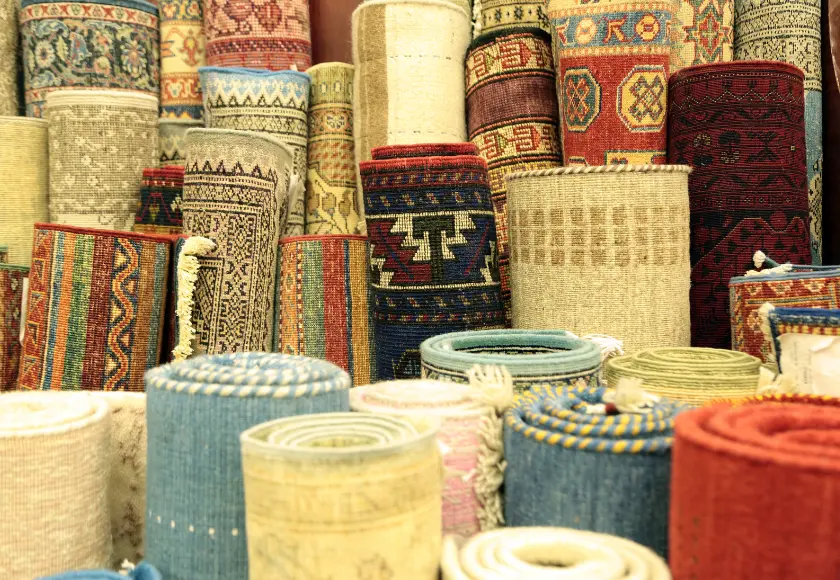
Price and Affordability: Striking the Perfect Balance Between Budget and Beauty
When searching for the perfect rug, balancing budget considerations with quality and aesthetics is crucial. Each rug material comes with its own unique price range, influenced by factors such as fiber quality, craftsmanship, and production methods. Let's delve into the cost differences between various rug materials and offer advice on how to find a rug that meets both your design aspirations and financial constraints.
Natural Fibers: Among natural fibers, there can be significant price variations. Wool rugs, for instance, may range from affordable options to more luxurious, high-end choices depending on factors like wool quality, craftsmanship, and origin. Similarly, silk rugs are often considered a luxurious and expensive option due to the delicate and labor-intensive nature of silk production. Cotton, jute, and sisal rugs tend to be more budget-friendly, offering an attractive combination of durability, aesthetics, and affordability.
Synthetic Fibers: Synthetic rugs, such as those made from nylon, polyester, or polypropylene, are generally more affordable than their natural fiber counterparts. However, as you already know, synthetic rugs may not be as eco-friendly or long-lasting as rugs made from natural materials. While they may be a tempting choice for those on a tight budget, it's essential to weigh the long-term benefits and drawbacks of synthetic materials before making a decision.
Price vs. Quality: When considering price and affordability, it's important to remember that you often get what you pay for. Investing in a high-quality, durable rug made from natural fibers can be more cost-effective in the long run, as it may last longer and maintain its beauty over time compared to a cheaper, synthetic alternative. Additionally, a well-crafted rug can become a cherished heirloom, passed down through generations.
Finding the Perfect Balance: To balance budget considerations with quality and aesthetics, Magic Rugs is the perfect destination for finding a rug that suits your needs without compromising on style or durability. Here's why shopping with us will help you strike the perfect balance and enjoy numerous benefits, discounts, and a guarantee of satisfaction:
Impressive Selection: At Magic Rugs, we offer an extensive range of rugs, from affordable options to luxurious high-end choices, in various materials, designs, and sizes. Our carefully curated collection ensures that you can find a rug that fits both your design preferences and budget constraints.
Competitive Pricing: We are committed to providing the best value for our customers. Our direct relationships with artisans, collectors, and rug makers from around the world enable us to offer competitive prices without compromising on quality. This means you can find a high-quality rug at a price that fits your budget.
Savings & Rewards: Magic Rugs offers various customer programs that allow you to save even more on your purchase. Our Rewards Program lets you earn points for every purchase, which can be used for future purchases. Additionally, we offer Trade Programs and Buyer & Retailer Programs that cater to different customer needs.
Free Shipping & Returns: Shopping with Magic Rugs means you don't have to worry about additional shipping costs if you are shipping to the continental U.S. We also offer Free 30-Day Returns on qualified orders, ensuring a hassle-free and satisfying shopping experience.
Expert Assistance: Our knowledgeable team is always available to assist you in finding the perfect rug that meets your design goals and budget. We can provide advice on rug materials, styles, and care, ensuring you make an informed decision and enjoy your rug for years to come.
By choosing MagicRugs, you can be confident that you're investing in a high-quality, beautiful rug that aligns with your budget and design preferences. Our commitment to customer satisfaction, exceptional value, and extensive selection makes us the ideal destination for finding the perfect rug to enhance your living space.
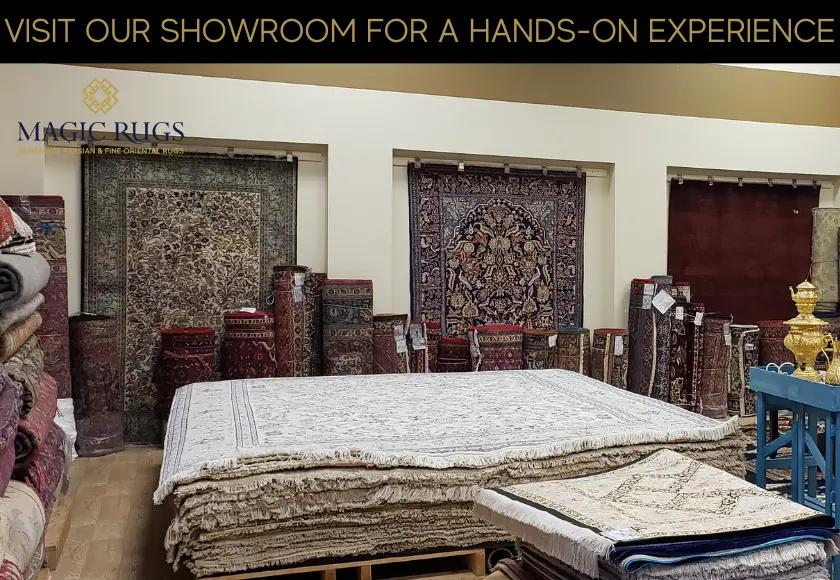
Choosing the Right Material: Expert Tips for Tailoring Your Rug Selection
Selecting the best rug material for your space, interior design style, and personal preferences is crucial in creating the perfect atmosphere and ensuring long-lasting satisfaction. Here are some expert tips to help you choose the right rug material:
Consider the Space: Think about the room where you'll be placing the rug. For high-traffic areas such as hallways, entryways, or living rooms, opt for durable materials like wool or jute that can withstand wear and tear. For spaces where comfort is essential, like bedrooms, choose a plush material like silk or a wool-silk blend for a luxurious feel underfoot.
Factor in Design Style: Your interior design style plays a significant role in determining the rug material. For instance, if you prefer a minimalist, modern look, consider a sleek, low-pile wool rug with a simple design. On the other hand, if your taste leans towards traditional or bohemian styles, a beautifully intricate Persian rug in silk or a high-quality wool material could be a perfect choice.
Assess Maintenance Needs: Before choosing a rug material, consider how much effort you're willing to invest in maintenance. Wool and cotton rugs are relatively low-maintenance and can be cleaned with regular vacuuming, while silk rugs may require professional cleaning to maintain their appearance and texture. Jute rugs are best suited for dry areas, as they can be challenging to clean if exposed to moisture.
Prioritize Comfort: If you have specific preferences for the feel and texture of a rug, take that into account when selecting the material. Silk rugs provide a smooth, luxurious sensation underfoot, while wool rugs offer warmth and softness. Jute and sisal rugs have a more textured feel, adding a rustic touch to your space.
Keep Sustainability in Mind: For those who prioritize eco-friendliness, choose a rug made from sustainable natural fibers like wool, cotton, or jute. These materials are not only gentle on the environment but also provide a timeless aesthetic that complements various design styles.
By taking these factors into consideration, you can confidently choose the perfect rug material that meets your needs and enhances your space. Remember, investing in a high-quality rug is an investment in your home and personal comfort, so take the time to make an informed decision.
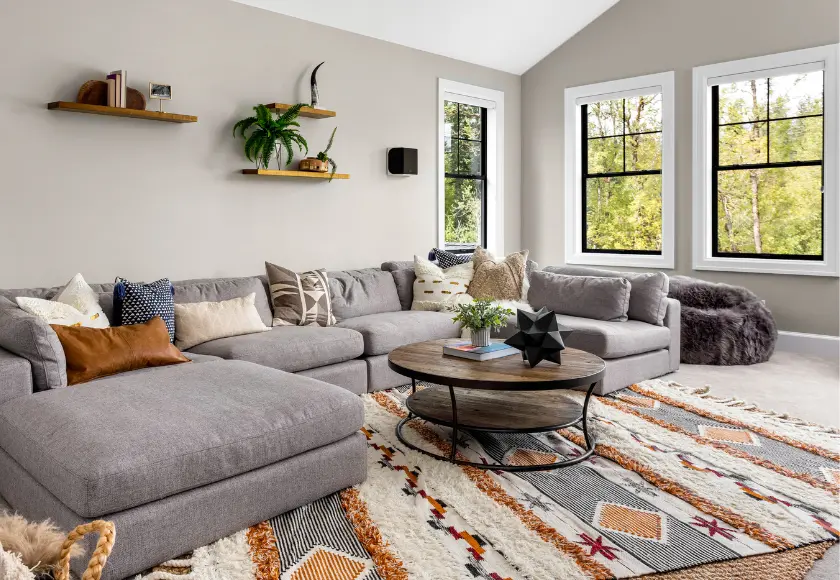
Conclusion: The Ultimate Rug Material Showdown Wrap-up
In summary, the comparison of rug materials has shown that each material brings its unique set of characteristics, benefits, and potential drawbacks. As you embark on your rug selection journey, remember to weigh factors such as durability, maintenance, comfort, texture, environmental impact, and price, as well as your personal preferences and interior design style.
By carefully considering these factors, you can make an informed decision that ensures your rug investment will not only enhance the aesthetics of your living space but also cater to your functional needs and preferences. In the end, the perfect rug material for you will depend on a delicate balance of practicality, style, and comfort.
As you explore the world of rug materials, let your creativity and individuality guide your choices. Don't be afraid to mix and match materials, experiment with different textures, and create a living space that truly reflects your personality and lifestyle. Happy rug hunting!
Explore more trending collections!
Share:

